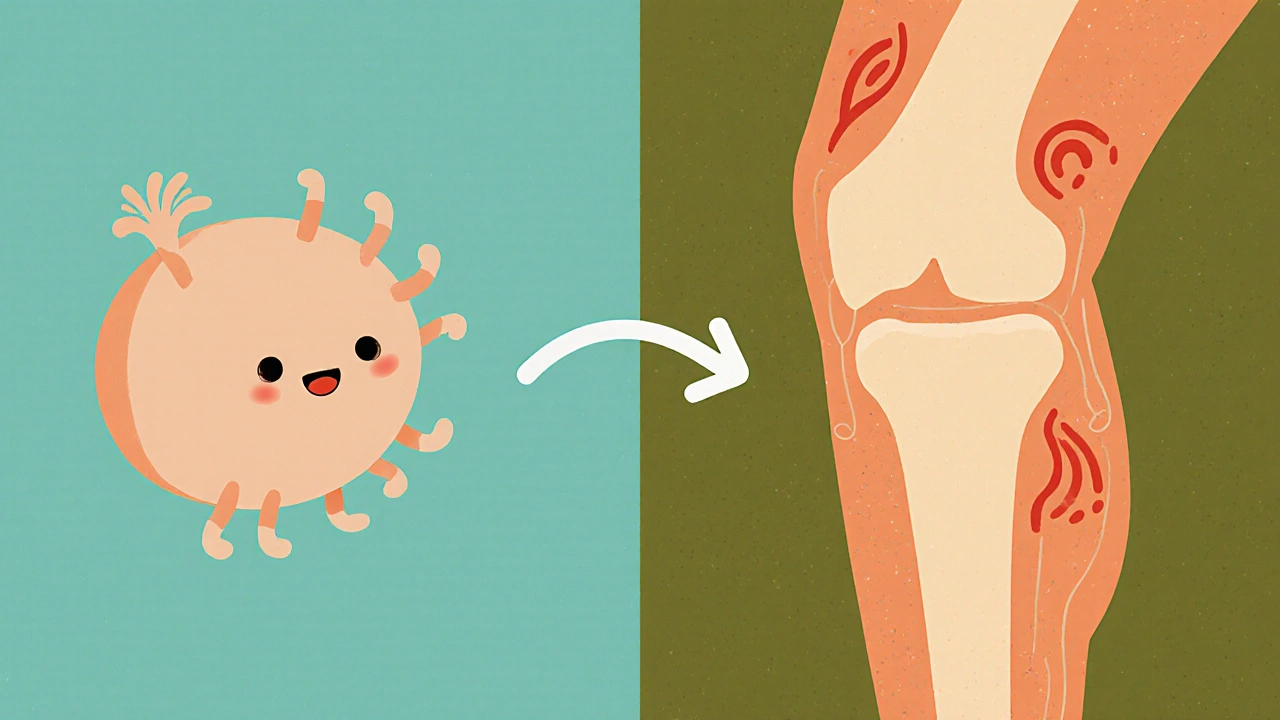Reactive Arthritis: Causes, Symptoms & Treatment
When dealing with reactive arthritis, a joint inflammation that shows up after an infection elsewhere in the body. Also known as Reiter's syndrome, it typically hits the knees, ankles or feet and brings pain, swelling and stiffness that can last weeks or months.
One of the biggest risk factors is the genetic marker HLA‑B27, a protein on white‑blood cells that makes some people more prone to autoimmune reactions. If you carry HLA‑B27, the odds of developing reactive arthritis after a bacterial infection jump dramatically. This link explains why doctors often ask about family history when they suspect the condition.
Typical triggers include gastrointestinal bugs like Campylobacter, Salmonella, or urinary‑tract infections caused by Chlamydia. The bacteria themselves usually clear, but the immune system keeps firing, leading to joint pain. That’s why the phrase “post‑infection arthritis” fits well – the inflammation follows, not the infection itself.
Key Factors and Management Strategies
First‑line treatment usually involves NSAIDs, non‑steroidal anti‑inflammatory drugs that reduce pain and swelling. Ibuprofen or naproxen are common choices; they work quickly for most patients. If NSAIDs aren’t enough, doctors may add a short course of antibiotics, targeted at the original infection source. This helps clear any lingering bacteria that could be keeping the immune system on edge.
Physical therapy plays a silent but huge role. Gentle range‑of‑motion exercises keep joints from stiffening and preserve muscle strength. Most therapists tailor programs to avoid overloading inflamed joints while still promoting mobility.
When symptoms linger beyond three months, disease‑modifying agents like sulfasalazine or methotrexate may be considered. These drugs temper the immune response more broadly and are usually reserved for chronic cases. However, most people see significant relief once the acute phase passes and they stick to NSAIDs, antibiotics and rehab.
reactive arthritis can feel overwhelming at first, but understanding the chain – infection triggers, genetic susceptibility, and targeted treatment – makes it manageable. Below you’ll find a curated set of articles that dig deeper into each piece of the puzzle, from pain‑reliever comparisons to strategies for coping with joint pain. Explore the collection to find actionable tips, medication guides and lifestyle advice that can help you get back on your feet faster.

Chlamydia and Reactive Arthritis: Understanding the Link
Explore how chlamydia infection can trigger reactive arthritis, covering symptoms, diagnosis, treatment, and prevention.
